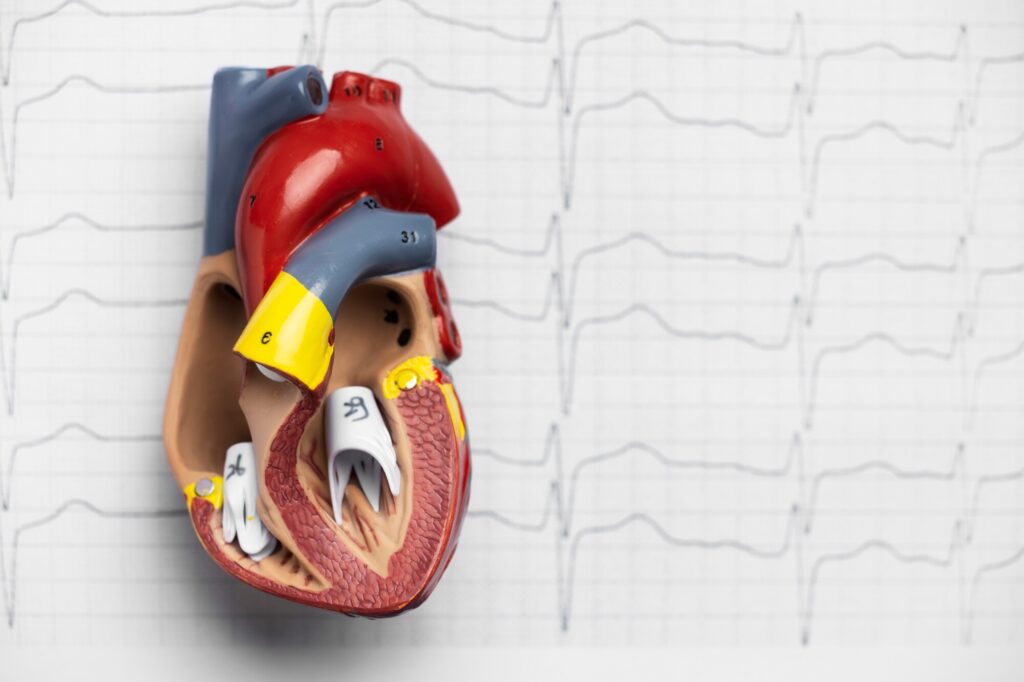Cardiorespiratory fitness (CRF), the ability of the circulatory and respiratory systems to supply oxygen to working muscles during sustained physical1 activity, is more than just a metric of athletic performance. It’s a cornerstone of overall health and well-being, influencing everything from disease risk to mental clarity. This in-depth blog post will explore the myriad uses and benefits of maintaining a good level of cardiorespiratory fitness, demonstrating its crucial role in a healthy and fulfilling life.

Understanding Cardiorespiratory Fitness: A Quick Recap
Before diving into its uses, let’s briefly revisit what CRF entails. It reflects the efficiency of the heart, lungs, and blood vessels in delivering oxygen to working muscles and removing metabolic waste products. A higher level of CRF indicates a more efficient system, allowing for sustained physical activity with less fatigue.
The Multifaceted Uses and Benefits of Cardiorespiratory Fitness:
The benefits of CRF extend far beyond just being able to run a marathon. Here’s a breakdown of its diverse uses:
- Reduced Risk of Chronic Diseases:
- Cardiovascular Disease: CRF is a powerful protector against heart disease, stroke, and other cardiovascular events. A strong heart and efficient circulatory system reduce the risk factors associated with these conditions, such as high blood pressure, high cholesterol, and plaque buildup in arteries.
- Type 2 Diabetes: Regular physical activity and good CRF improve insulin sensitivity and glucose regulation, significantly reducing the risk of developing type 2 diabetes. It helps the body utilize insulin more effectively and manage blood sugar levels.
- Certain Cancers: Studies have linked higher CRF levels to a reduced risk of certain cancers, including colon, breast, and lung cancer. The mechanisms are complex but likely involve improved immune function, hormonal regulation, and reduced inflammation.
- Obesity: CRF plays a crucial role in weight management and helps prevent obesity. Regular physical activity burns calories and helps regulate metabolism, making it easier to maintain a healthy weight.
- Improved Cardiovascular Health:
- Stronger Heart: Regular exercise strengthens the heart muscle, making it pump more efficiently. This leads to a lower resting heart rate, meaning the heart doesn’t have to work as hard at rest.
- Lower Blood Pressure: CRF helps regulate blood pressure, reducing the risk of hypertension. Exercise can help dilate blood vessels and improve blood flow.
- Improved Cholesterol Levels: Regular physical activity can improve cholesterol profiles, increasing HDL (“good”) cholesterol and lowering LDL (“bad”) cholesterol.
- Enhanced Respiratory Function:
- Increased Lung Capacity: Exercise can improve lung capacity and efficiency, allowing for greater oxygen intake.
- Stronger Respiratory Muscles: The muscles involved in breathing become stronger with regular exercise, making breathing easier.
- Weight Management and Body Composition:
- Calorie Burning: Physical activity burns calories, helping to create a calorie deficit necessary for weight loss or maintenance.
- Increased Metabolism: Regular exercise can boost metabolism, even after the workout is finished, leading to more calories burned throughout the day.
- Improved Body Composition: CRF contributes to a healthier body composition, with a higher proportion of lean muscle mass and a lower proportion of body fat.
- Improved Musculoskeletal Health:
- Stronger Muscles and Bones: Weight-bearing exercise, which often accompanies CRF-building activities, strengthens muscles and bones, reducing the risk of osteoporosis and injuries.
- Improved Joint Health: Regular physical activity can improve joint mobility and reduce pain associated with arthritis.
- Boosted Immune Function:
- Enhanced Immune Response: Regular exercise has been shown to enhance immune function, making the body more resistant to infections.
- Improved Mental Health and Cognitive Function:
- Reduced Stress and Anxiety: Exercise releases endorphins, which have mood-boosting effects and can reduce stress and anxiety.
- Improved Sleep Quality: Regular physical activity can improve sleep quality, leading to better rest and overall well-being.
- Enhanced Cognitive Function: Studies have shown that CRF is linked to improved cognitive function, including memory, attention, and decision-making. Increased blood flow to the brain is thought to play a role.
- Increased Energy Levels:
- Reduced Fatigue: Counterintuitively, regular exercise can actually increase energy levels and reduce fatigue. A stronger cardiorespiratory system can deliver oxygen more efficiently, leading to less fatigue during daily activities.
- Improved Quality of Life:
- Increased Stamina and Endurance: Good CRF allows individuals to participate in activities they enjoy without getting easily fatigued.
- Greater Independence: Maintaining good CRF throughout life helps maintain independence and mobility in older age.
- Enhanced Self-Esteem and Confidence: Achieving fitness goals and feeling physically capable can boost self-esteem and confidence.
- Longevity:
- Increased Lifespan: Studies have shown a strong correlation between higher CRF levels and increased lifespan. By reducing the risk of chronic diseases and improving overall health, CRF can contribute to a longer and healthier life.
Examples of How CRF is Used in Daily Life:
- Climbing stairs without getting winded: A good level of CRF makes everyday activities easier.
- Playing with children or grandchildren: CRF allows you to be more active and engaged with loved ones.
- Gardening or doing yard work: CRF allows you to perform these tasks without becoming overly tired.
- Traveling and exploring new places: CRF makes it easier to walk and explore without getting fatigued.
- Participating in recreational activities: CRF allows you to enjoy sports, hiking, dancing, and other activities.
Measuring and Improving Cardiorespiratory Fitness:
As discussed in previous responses, CRF can be measured through direct (VO2 max testing) and indirect (e.g., graded exercise test, Rockport walking test, Cooper run test) methods. Improving CRF involves engaging in regular aerobic exercise, focusing on frequency, intensity, duration, and type of activity.
Conclusion: A Foundation for a Healthier Life
Cardiorespiratory fitness is not just about athletic prowess; it’s a fundamental component of overall health and well-being. Its benefits extend to virtually every aspect of life, from reducing the risk of chronic diseases to improving mental health and increasing longevity. By prioritizing activities that enhance CRF, individuals can invest in a healthier, more fulfilling, and longer life. It’s a gift you give yourself, one that pays dividends in countless ways, enabling you to live more actively, more confidently, and more joyfully. It’s a journey worth taking, and the destination is a healthier, happier you.





Leave a Reply
You must be logged in to post a comment.